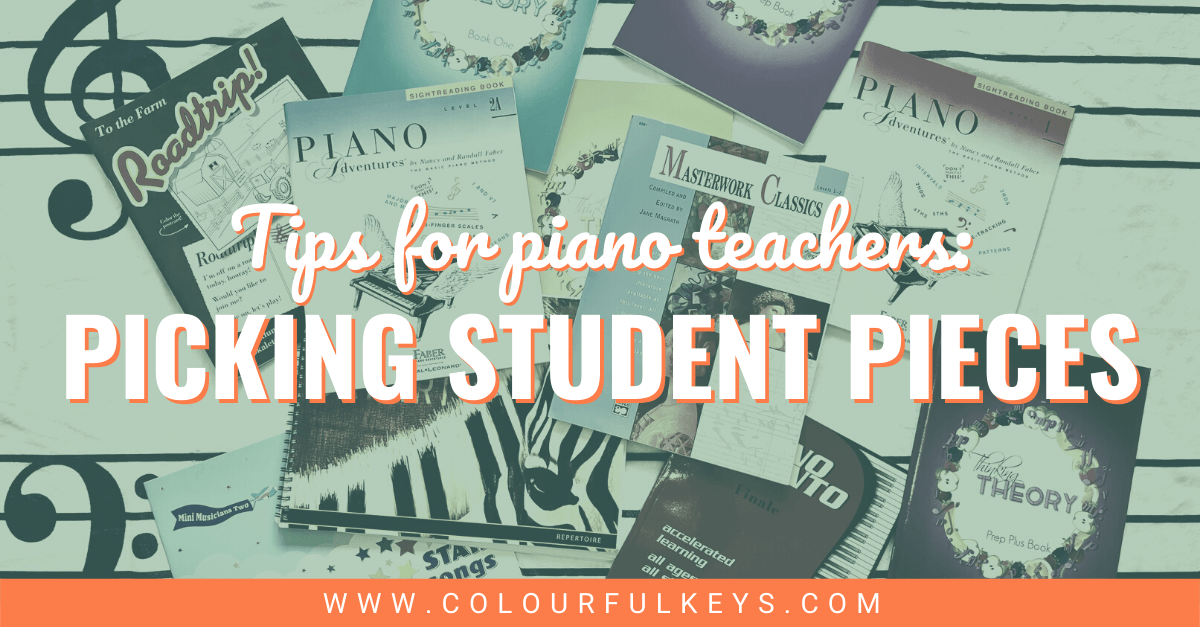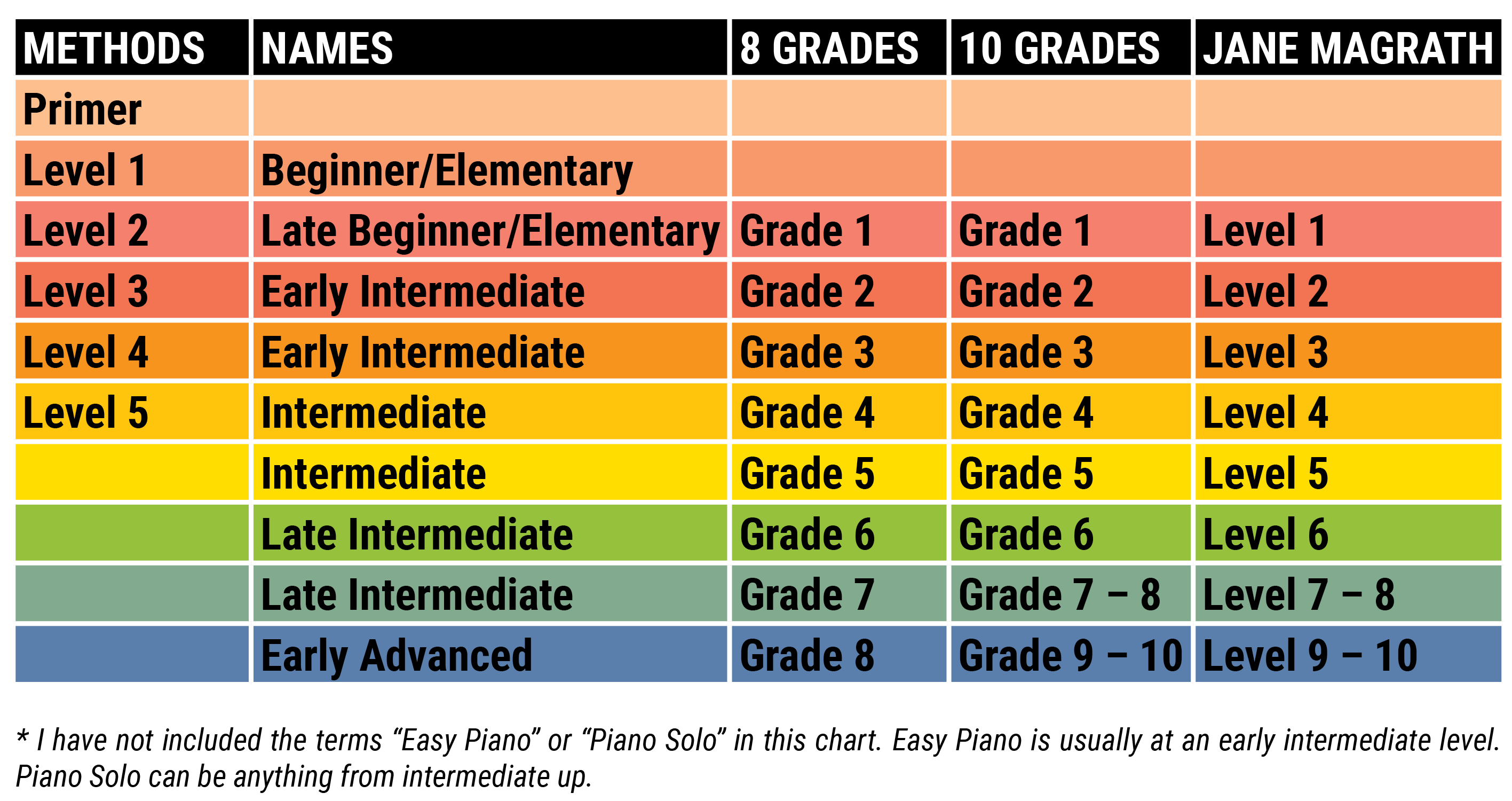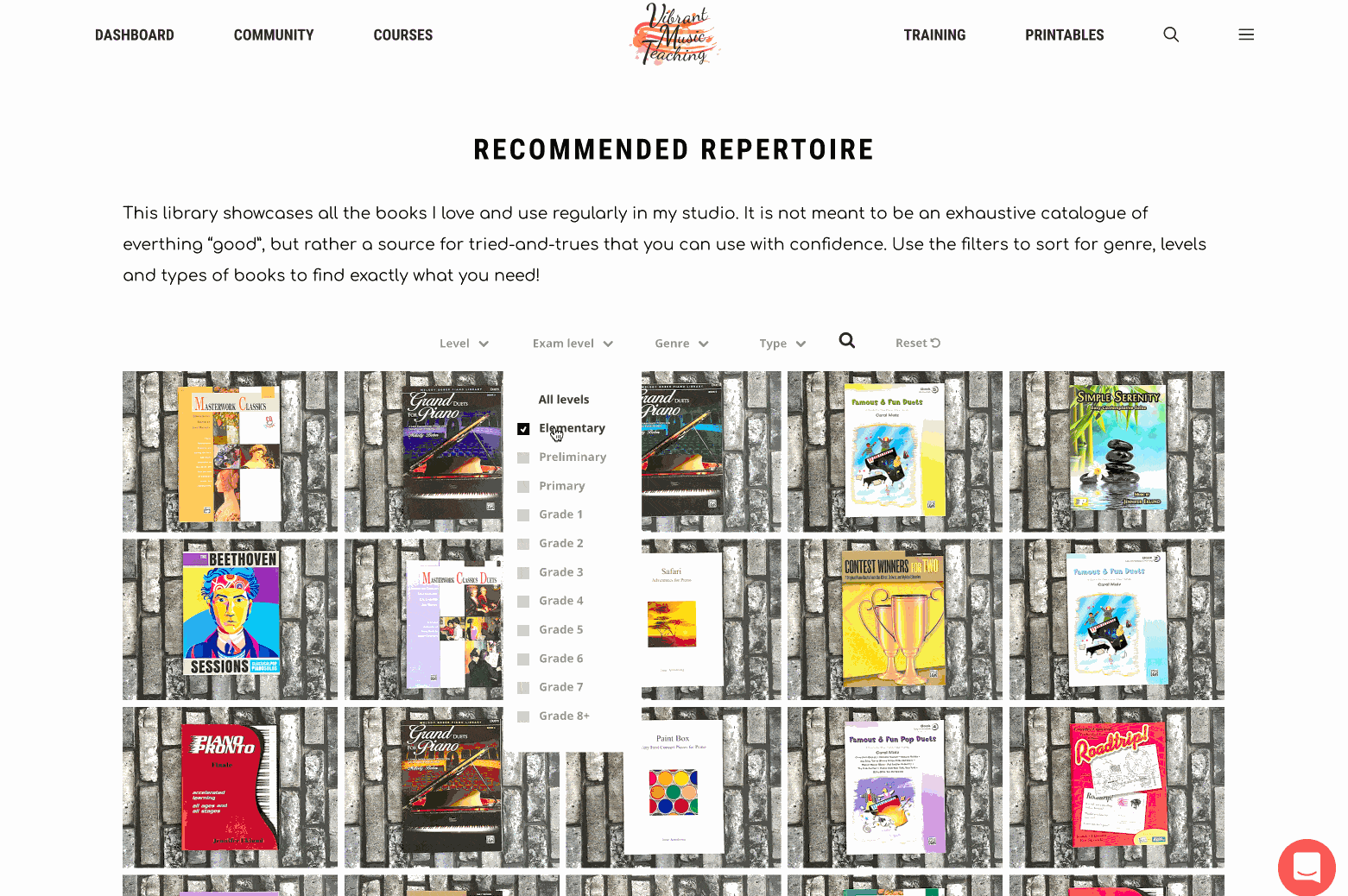A big part of a piano teacher’s job is choosing repertoire that students find motivating. But how do we pick great piano pieces for each of our students? How do we know what they will like?

⬆️ Listen to the podcast above or keep on reading, whichever fits your style. ↙️
I’ve tried heaps of different books and have had some real flops over the years. I would be so excited about a particular piece or collection and then my student would just be all “meh” and I’d be left scratching my head.
But that never happens anymore. Here’s my system for picking piano pieces students love, every time. ✅
Step 0: Don’t Pick
Yep, that’s right. I don’t believe teachers should pick out pieces or books for their students at all.
At least, not supplemental books (which is probably why you’re here.) In my opinion, teachers should pick core books (e.g. method books and classical repertoire collections) but students should choose the other piano books themselves.
So, do I send them to a bookstore and tell them to have at it?
Absolutely not. That would result in extreme frustration for both of us as the book they chose would be:
- The wrong level
- Poorly arranged
- Both
Whenever a piano student needs a piece or supplemental book, I send them a list of books and where they can listen to them and/or watch performances of them online. All the selections are good quality and are at the right level, but they span a wide range of genres so that the student can have autonomy. This helps them have ownership over their musical journey and generally makes them more motivated to practice the pieces, too.
Step 1: Find Great Piano Pieces
Now the question becomes this: Have I made your job easier, or harder? You don’t need to find just one great piece or book now; you need to find a few so your student can choose.
It takes the pressure off finding the perfect repertoire…but you still need to find several options at the right level.
Understanding Piano Piece Levels
This is the toughest part for many, especially new or newish teachers. There are a ridiculous number of different levelling systems.
I’ve put together this chart to give you some guidance if you’re new to all these terms. The lining up of these systems is highly subjective, but this is how I see them map out generally.

Tip: Bookmark this page so you can come back when you get confused by a levelling system used by one publisher or another!
The ‘Jane Magrath levels’ I refer to here are those used in her book ‘The Pianist’s Guide to Standard Teaching and Performance Literature’ as well as her ‘Masterwork Classics’ collections.
Piano Safari is a bit of an exception to the method book levels. Here’s how I see their method breaking out:
- Piano Safari Level 1 = Primer + Level 1 in most other methods
- Piano Safari Level 2 = Level 2 + 3 in most other methods
- Piano Safari Level 3 = Level 4 + 5 in most other methods
Again, this is just my opinion, not that of the publisher.
Picking Piano Pieces in Different Genres
Now that you understand the levels a bit better, you get to look for pieces and books.
Try not to get overwhelmed if you’re new to this. There are countless wonderful composers and publishers out there. You’ll get to know them over time and find out what suits your studio, but your goal for this first list should be to find 3 – 5 books or single pieces that differ in style and are at the same level.
Once you’ve found that many, stop! Stay away from the rabbit holes! 🕳
If you’re a Vibrant Music Teaching member you can use our Recommended Repertoire library to filter and find some wonderful music.

Not a member yet? You can find also quite a few reviews of books I like on our YouTube channel.
The Good News
The great thing about doing this research and setting up a list at your student’s level is that you can reuse it.
Save your list somewhere you’ll find it easily next time you have a student who needs repertoire at this level. I save mine in Vivid Practice (the practice app we use in my studio) but you could use Google Docs or any other place you save notes. (I do recommend digital rather than a physical notebook, since you’ll need to save the links.)
Soon you’ll have a list for each level and you can just add to them when you find new books or pieces you love. ❤️
Need more help with repertoire for your studio? Check out the “Repertoire and Resources” section of my centralised Planning Lessons hub page.
Step 2: Send the Repertoire List
The hard work is done! Send the list of pieces with links to your students. Make sure the links allow them to listen or watch, as your student won’t be able to judge just based off the sheet music preview or piece titles.
I send my lists as Vivid Practice assignments but you could use a different practice app, a Google Doc or even just an email sent directly to the parents. Make sure to give them a deadline, e.g. they need to decide before the next lesson.
Step 3: Get to work!
I provide my students with all their books and pieces as part of my all-inclusive tuition. So once a student chooses, I just pull it from the shelf or purchase the digital license and print it out.
If you have parents purchase their own books, then you’ll need to get them to order it once the student has made their decision.
If the student gets to the deadline (normally the next lesson) and hasn’t listened to the music and made their choice, then we simply listen to a few clips during the lesson and they choose right there.

Then we crack the spine and get to work on the pieces, knowing that this is music that the student likes and is invested in learning.
How do you pick pieces for piano students?
Do you send lists like I do? I’d love to hear your thoughts on this in the comments below. 🙂

Hi Nicola.
You wrote an article comparing piano methods as this has been difficult to figure out for some kids. Can you resend that article? It compared piano methods and what you liked and didn’t like.
Thank you, I’ll keep looking on your site. I just haven’t heard you about this same request I made over a week ago.
Kathryn King
Hi Kathryn,
We did reply to that, perhaps you missed the reply. Here’s the link again https://colourfulkeys.ie/best-piano-method-books/